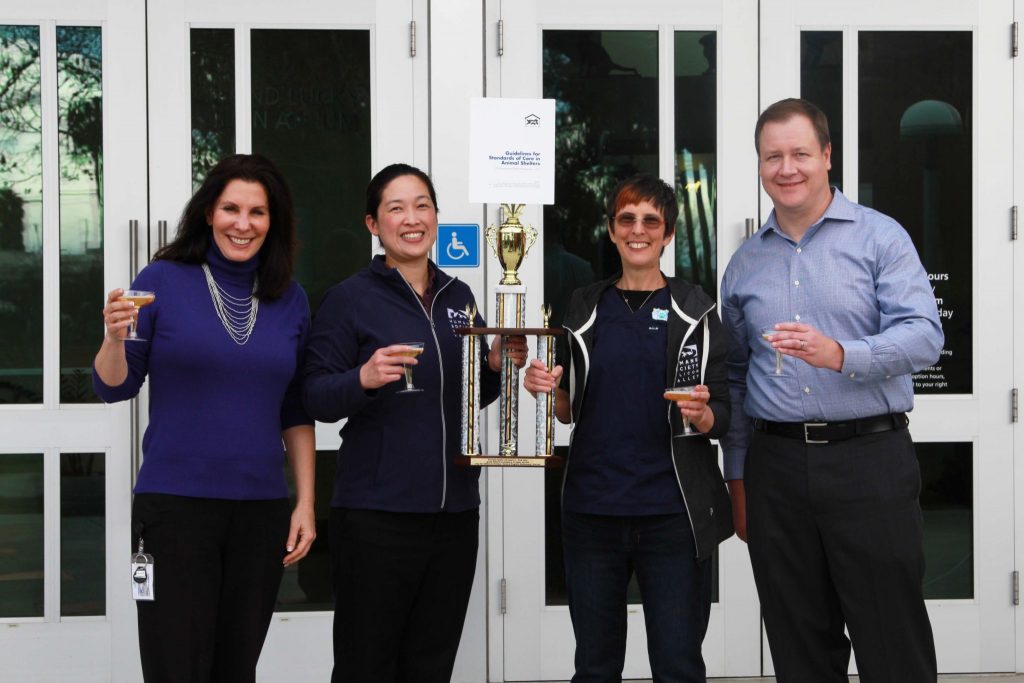When UC Davis’ Dr. Kate Hurley was actively working as a veterinarian, she met a dog named Nala, a 10-month-old owner surrender who came into the shelter where Hurley was consulting. Nala arrived healthy, but was never adopted.
As Hurley recalls, Nala arrived at the shelter when many were making commitments to save every healthy or treatable animal. The organization Hurley worked for jumped on board, only it hadn’t figured how to balance shelter capacity and animal care. All Nala needed was a veterinarian to perform a medical check and see if she had been spayed before being moved to the adoption floor, but the over-crowded shelter could not find the time. Nala remained in the back, where sick and injured animals were housed, and she was exposed to them each day when her cage was cleaned.
As pneumonia spread through the shelter, veterinarians became overwhelmed and Nala was forced to wait. Days later, Hurley shot a film of a dog dying of pneumonia. While viewing the film later that evening and writing her report, Hurley realized the dying dog was Nala and cried. A healthy animal had contracted a deadly illness and couldn’t be saved. In those moments of despair, Hurley made Nala a promise: her death would not be in vain.
In the shelter world, the idea of setting guidelines for animal care is not new, but Hurley knew no one wanted to take on the task of spending countless hours developing a standard of care. In those moments of grief, Hurley was reminded of her promise to protect animal health and relieve suffering, and soon thereafter, she and her colleague, Dr. Sandra Newbury, assembled 14 authors, all of which were involved in animal care, to write the guidelines.
The team looked at every set of regulations they could find—laboratory regulations, boarding facilities, pet stores and existing shelter regulations in North America and Europe. They looked at the appendices of already set regulations and the hundreds of references that went into creating them. In the end, they settled on five freedoms: Freedom from hunger and thirst; discomfort; fear and distress; pain, injury or disease; and freedom to express normal behavior.
“We didn’t ask of whether it would be easy or hard to accomplish,” Hurley said. “We didn’t ask whether it would be cheap or expensive. Many of us worked at shelters. We didn’t ask if we were already doing this or not. We just asked, ‘do the animals need this to experience the five freedoms?’ And we broke them into over 500 guidelines ranked from ideally, to should, to must, to 21 unacceptables … And finally, after a couple years of work, about two years after I thought it would be done, we brought them to life and we presented them at the North American Conference in Orlando, Florida at the beginning of 2010.”
Nine years, 11 months and one day after Hurley took a photograph of Nala, she rejoiced with Humane Society Silicon Valley when the shelter celebrated becoming the first shelter in the nation to meet every standard set forth by the Association of Shelter Veterinarians for model shelters.
The recognition, announced in September 2017 and celebrated on Jan. 4, exemplifies HSSV’s commitment to the well-being of the animals in the shelter’s care and dedication to setting those animals up for success when they transition to their forever homes. As the first shelter in the country to receive the honor, HSSV has proven the guidelines set are attainable, and according to HSSV President Carol Novello, the Arizona Humane Society will not only visit the facility, but made a commitment to become the nation’s second model shelter.
“You took us from ideally and should, and must to can, and will and did,” said Hurley. “You proved that there is no compromise between great welfare and great life-saving success. And, not just for animals like Nala who came in beautiful and healthy and friendly, but for fat, ugly dogs, and feral cats, and puppies that have been exposed to Parvo, and kittens with ringworm, and naughty, naughty cats that don’t always go into the litter box, and animals with all the defects that are just like us. You proved that.”
Visit www.hssv.org for more information.
